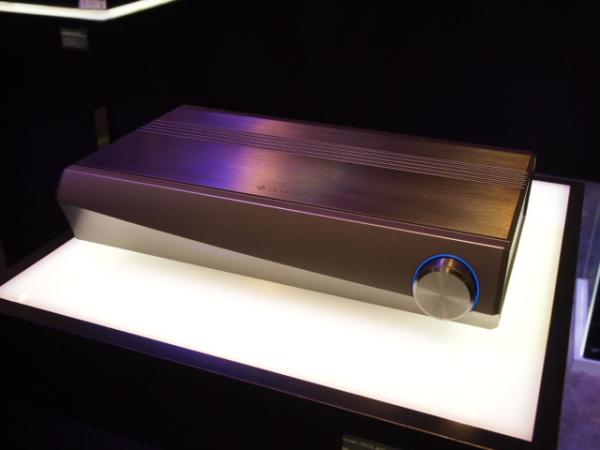Denon Seeks Sound Bar-Like Simplicity In Heos AVR

The $899 networked AVR is striking in appearance, coming with an angular all-aluminum chassis and no front-panel display. Inside it packs a 5x60-watt amplifier that drives a wired 5.1 speaker system, but in a first for Denon, it can use a pair of Heos wireless-multiroom speakers as wireless surrounds. Select sound bars from other companies also use wireless surrounds to deliver a full discrete 5.1-channel sound field.
Also like other sound bars, the AVR needs only one HDMI-cable connection to a TV’s HDMI output to play back audio from TV-connected sources such as cable boxes and Blu-ray players. In this configuration, the TV can be used for HDMI source switching – although the AVR nonetheless sports four HDMI 2.0a inputs with HDCP 2.2 copy protection for direct connection of video sources, ensuring surround-sound playback at the highest possible performance levels.
In another sound bar-like similarity, the Heos AVR features IR learning so basic features such as on/off, volume and input switching can be controlled from a TV remote. The IR eye is built into one of the AVR’s front feet so it doesn’t detract from the front panel’s clean lines.
With no front-panel display, and no on-TV display for that matter, the AVR exudes simplicity. But you still need to set it up, and for that, Denon offers its Heos smartphone and tablet app, which it believes will simplify setup through its touchscreen user interface.
For use as wireless surround speakers, Denon offers four wireless Heos speakers priced from $199 to $599 each along with a $499 Heos Amp HS2, which incorporates stereo amplifier and wireless Heos streaming to drive any passive speaker pair.
Also to meet consumers’ desire for simplicity, the AVR lacks more advanced features such as room-response correction and decoding of Dolby Atmos and DTS:X object-based surround tracks.
The AVR fully integrates with a Heos-based multiroom-audio system to send music from connected sources, including a TV, to Heos speakers in other rooms of the house.
Product manager Paul Belanger called it “a new take on the AVR.” It’s Denon’s first slim-line AVR and first AVR with Class D amplification, he noted.
For custom integrators, the AVR features a back-panel IR input and IP control for integration with IP-based home-control systems.













































